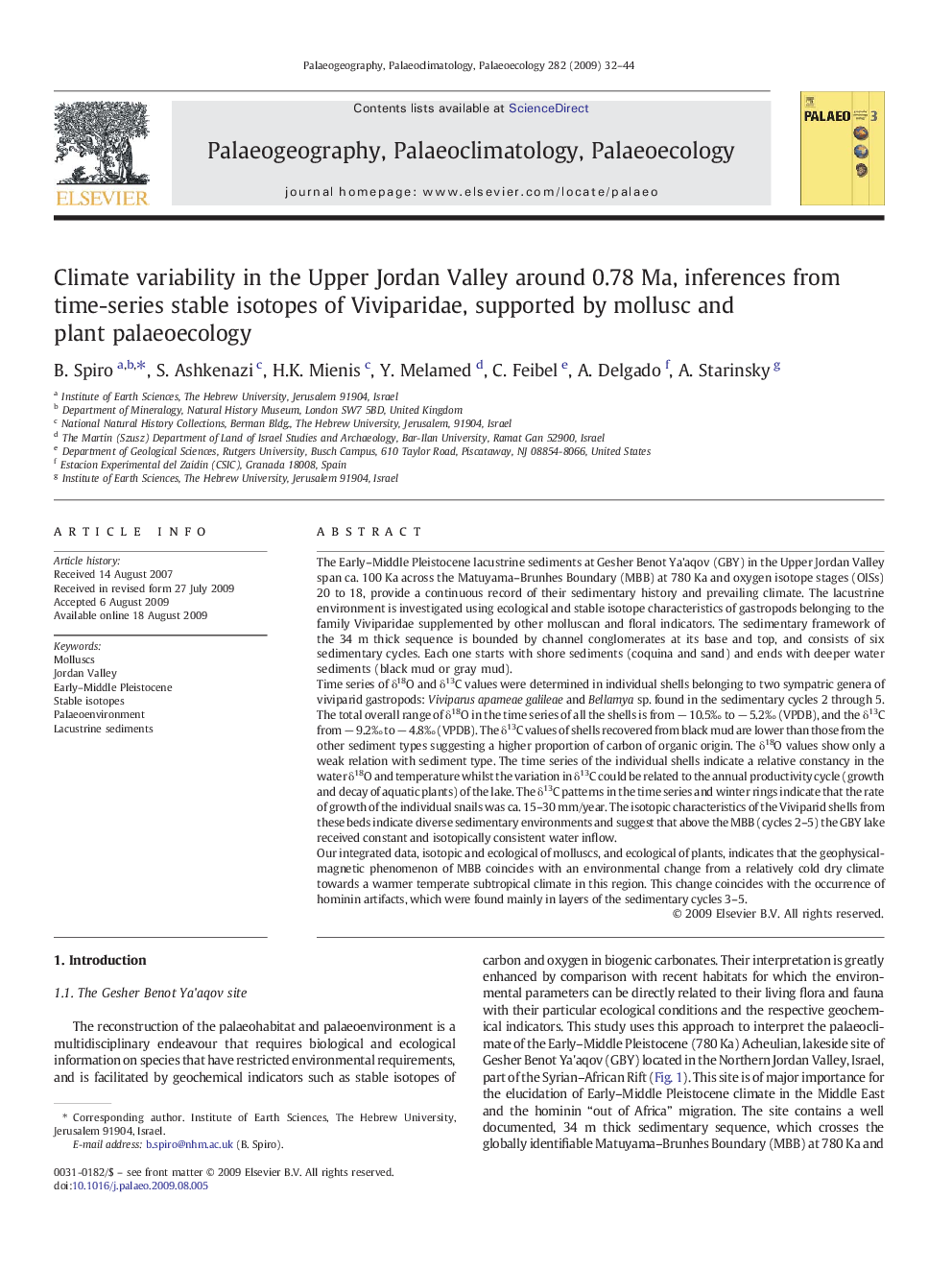| کد مقاله | کد نشریه | سال انتشار | مقاله انگلیسی | نسخه تمام متن |
|---|---|---|---|---|
| 4467919 | 1622293 | 2009 | 13 صفحه PDF | دانلود رایگان |

The Early–Middle Pleistocene lacustrine sediments at Gesher Benot Ya'aqov (GBY) in the Upper Jordan Valley span ca. 100 Ka across the Matuyama–Brunhes Boundary (MBB) at 780 Ka and oxygen isotope stages (OISs) 20 to 18, provide a continuous record of their sedimentary history and prevailing climate. The lacustrine environment is investigated using ecological and stable isotope characteristics of gastropods belonging to the family Viviparidae supplemented by other molluscan and floral indicators. The sedimentary framework of the 34 m thick sequence is bounded by channel conglomerates at its base and top, and consists of six sedimentary cycles. Each one starts with shore sediments (coquina and sand) and ends with deeper water sediments (black mud or gray mud).Time series of δ18O and δ13C values were determined in individual shells belonging to two sympatric genera of viviparid gastropods: Viviparus apameae galileae and Bellamya sp. found in the sedimentary cycles 2 through 5. The total overall range of δ18O in the time series of all the shells is from − 10.5‰ to − 5.2‰ (VPDB), and the δ13C from − 9.2‰ to − 4.8‰ (VPDB). The δ13C values of shells recovered from black mud are lower than those from the other sediment types suggesting a higher proportion of carbon of organic origin. The δ18O values show only a weak relation with sediment type. The time series of the individual shells indicate a relative constancy in the water δ18O and temperature whilst the variation in δ13C could be related to the annual productivity cycle (growth and decay of aquatic plants) of the lake. The δ13C patterns in the time series and winter rings indicate that the rate of growth of the individual snails was ca. 15–30 mm/year. The isotopic characteristics of the Viviparid shells from these beds indicate diverse sedimentary environments and suggest that above the MBB (cycles 2–5) the GBY lake received constant and isotopically consistent water inflow.Our integrated data, isotopic and ecological of molluscs, and ecological of plants, indicates that the geophysical-magnetic phenomenon of MBB coincides with an environmental change from a relatively cold dry climate towards a warmer temperate subtropical climate in this region. This change coincides with the occurrence of hominin artifacts, which were found mainly in layers of the sedimentary cycles 3–5.
Journal: Palaeogeography, Palaeoclimatology, Palaeoecology - Volume 282, Issues 1–4, 15 November 2009, Pages 32–44